Beautiful Seasonal Colour With The Mighty Oak Tree: Dyeing Linen With Oak Leaves
In ancient Ireland, the Oak held special meaning with the Celts. Considered the King of the forest, it was associated with strength, nobility, longevity, inspiration and knowledge. The Oak itself has a lineage dating back roughly 85 million years. Historically, the oak was essential to the Irish way of life, providing shelter, fuel, building materials, food as well as habitats for wildlife.
With over 500 hundred species of Oak, they are known for their longevity and can live for 300-400 hundred years. With deciduous and evergreen varieties, they are characterised by their wavey leave pattern and acorn seed.
As a dye plant, the leaves, bark, acorns and twigs can be used to create colour. The Oak is high in tannin which acts as a natural fixative ensuring beautiful long-lasting colours. The oak galls contain the highest concentration of tannin and these are commonly used to mordant plant fibres such as linen, cotton or hemp.
Different parts of the Oak will yield a range of complementary colours in the dye pot. Depending on the time of year, the bark yields tans, beiges, browns, greys and mauves with the leaves producing mustards, ocher, clay or grey colours. The oak galls have been used throughout history to create greys when dyed with iron.
If you are interested in natural dyeing, Oak can be a wonderful source of dye. The bark, leaves and twigs are available throughout the year with the acorns available in the Autumn.
The colours below are from leaves gathered in February in Ireland. The leaves had lost all their green and were a beautiful Autumn brown but this method will work for leaves throughout the year.
If you are going to dye with the oak, I would recommend using twice the weight of plant material to the weight of your fibre to be dyed. If your linen weighs 100g, use 200g of oak leaves.
Method
Place your Oak leaves in a pot ( large enough to hold your fabric so it can move freely).
Cover with boiling water and let sit overnight.
Top up the water in your pot and simmer gently for 1-2 hours.
Once the water has changed and the dye extracts, strain out the leaves.
The dye is now ready to use
Preparing Linen for Dyeing
You can use fabric that has been prepared for dye (PFD) or regular linen. With either type, I would recommend cleaning (scouring) in the washing machine to remove any residues or impurities. Once your fabric is prepared (without the use of detergent) presoak it in a bucket of tap water to dampen the fibres, then add to the dye bath and simmer gently until your fabric changes to the shade you like. The length of time you leave your fabric in the dye pot is up to you, the longer you leave it the darker the shades will be just make sure you stir your fabric frequently.





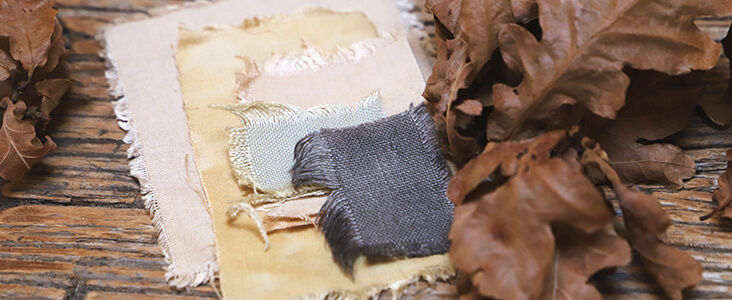
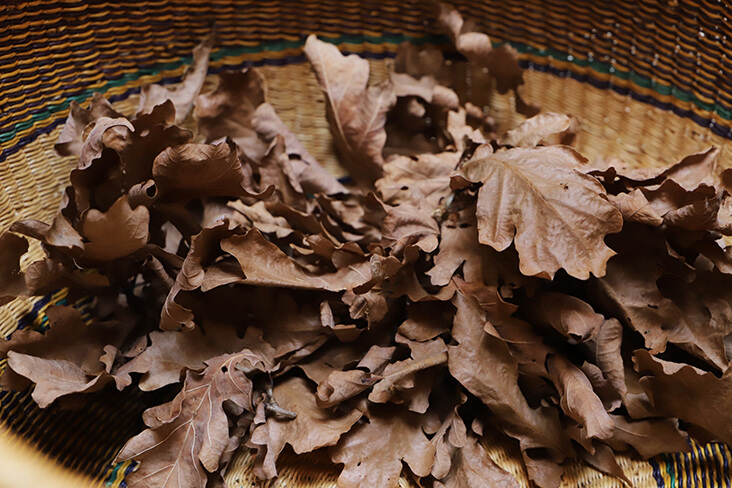
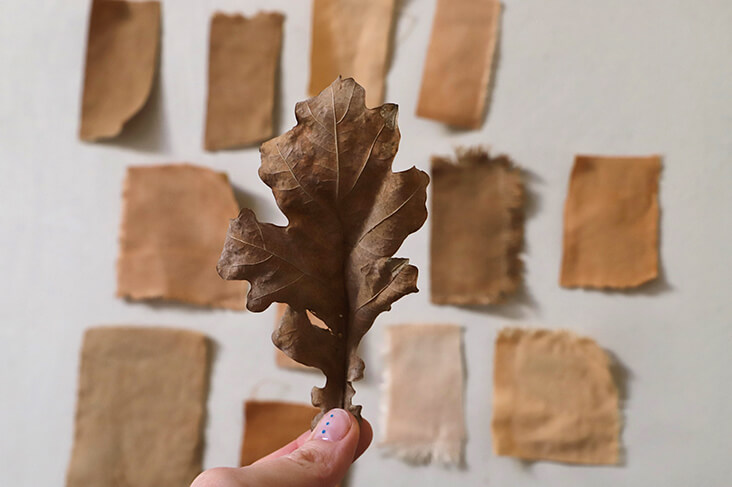
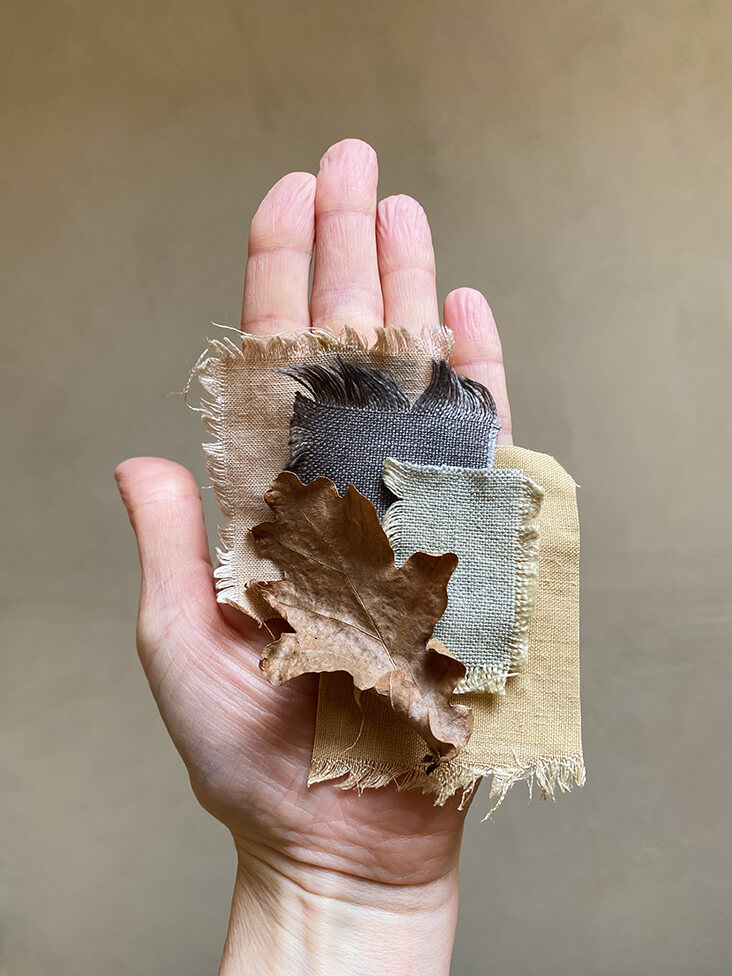
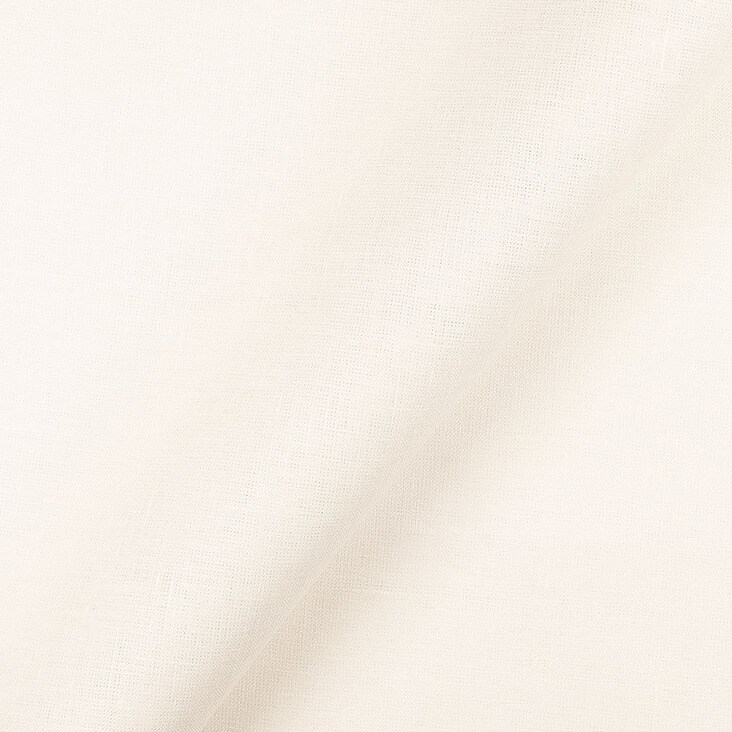










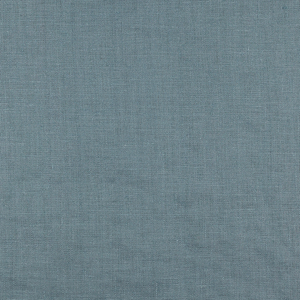





















7 Comments
Ashleigh Mayhew
Hi! This might be a silly question, but does the natural dye come out over time with washing?
JOAN FURLONG
Hi Kathryn,
Thank you for this information. I live in the Southeastern USA and right now the evergreen oaks here are dropping leaves like crazy! I’ve been gathering the deepest brown leaves I can find but have a question about quantity: if double the weight of the fabric is needed, and middle-weight linen is 5.5 oz. per yard, then 11 oz. of leaves per yard. If 3 yards of fabric, do I need 33 oz. of leaves?
Also, re quantity of water, I have a big old aluminum lobster pot for dying: should I fill it with a specific quantity of water or just make sure there’s enough water to cover the fabric?
Many thanks!
Joan
Kathryn Davey
Hi Joan, Sorry for my delay in getting back to you & thanks for your comment & questions. In terms of quantity, yes that is correct. It is only a guideline & a good place to start for a decent depth of shade. You can always try less or more for lighter or darker shades. In terms of water, yes use enough to cover the leaves when extracting the dye and enough to cover your fabric when dyeing. Thanks again for your questions and I hope you enjoy the process. x Kathryn
Kim Sessions
I cannot wait to try this! I did my DNA and its 54% Northwestern Europe and England and 32% Scotland so it must be calling me! lol
Kathryn Davey
Hi Kim, sounds like there is Oak in your blood, best of luck if you give it a go 🙂 Kathryn
Leonard Seastone
For dying with Oak Leaves:
1: can green, Summer leaves be used.
2: If so will the color still be brown?
3: What do you use as a mordant and how much in proportion to the weight of the leaves?
4: Are there any other ingredients?
Thank-you,
Leonard
Kathryn Davey
Hi Leonard,
Yes, leaves can be used throughout the year, whether they are fresh or dried, green or brown. You will most likely get some shade of tan or beige, but different species will give you different colours. You don’t need to add a mordant when dyeing with Oak as it’s already very high in tannin and this acts as a natural mordant. I didn’t add any other ingredients to the dye pot but I did modify the swatches once I removed them from the dye pot by using separate solutions of alum & iron. I hope this helps answer your questions. Warmest, Kathryn